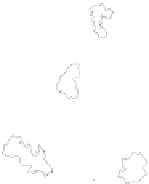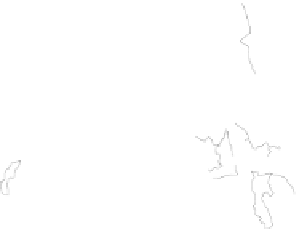Geography Reference
In-Depth Information
Figure 5-13
The previous map applies the GHI evenly within
countries. This map of Bangladesh shows that
hunger (like any other phenomenon) is not
evenly distributed. Higher incidence of hunger is
found inareas that are subject to cyclonic storms
and flooding, tribal regions, hill regions, and
other areas with poor soil, and places with poor
infrastructure that are remote from markets and
sources of assistance.
Source: World Food Program.
IN
D
IA
(West Be
ng
al)
IN
D
IA
(Me
g
halaya)
IN
D
IA
(Assam)
IN
D
IA
(T r
ip
ura)
IN
D
IA
(West Be
ng
al)
Bay of
Incidence of hard-core
food poverty
Bengal
MYANMAR
Low(<10
%
)
Mo
d
erate(10-20
%
)
H
ig
h(20-30
%
)
Very h
ig
h(>30
%
)
0
1
5
3
06
09
K
i
lometers
The situation is bleakest for rural women who contribute
about 65 percent of food production (Figure 5-14).
Bangladeshi women' s wage rates are so low that a day' s
earnings cannot maintain a family of three. Poorly paid mi-
grant workers cannot afford rising food prices. Moreover, in
the wake of the ongoing financial crisis, millions have lost
their jobs. Also vulnerable are tribal groups, many of whom
have lost access to their traditional lands and forests and
other common property resources on which they depended
for food and livelihood. Low caste (social rank) groups in
India and Nepal account for more than 170 million individ-
uals who are regularly discriminated against. The list of
groups suffering food insecurity is a long one indeed.
IFAD and the WPF have found that the majority of
poor and undernourished people are:
Landless households
Marginal and tenant farmers
•
Indigenous people (tribes that are discriminated
against)
Scheduled castes (low social level groups in India,
also discriminated against)
Refugees and displaced persons from areas of con-
flict or environmental disaster
Herders
Coastal fishers















































































































































































































































































































Search WWH ::

Custom Search